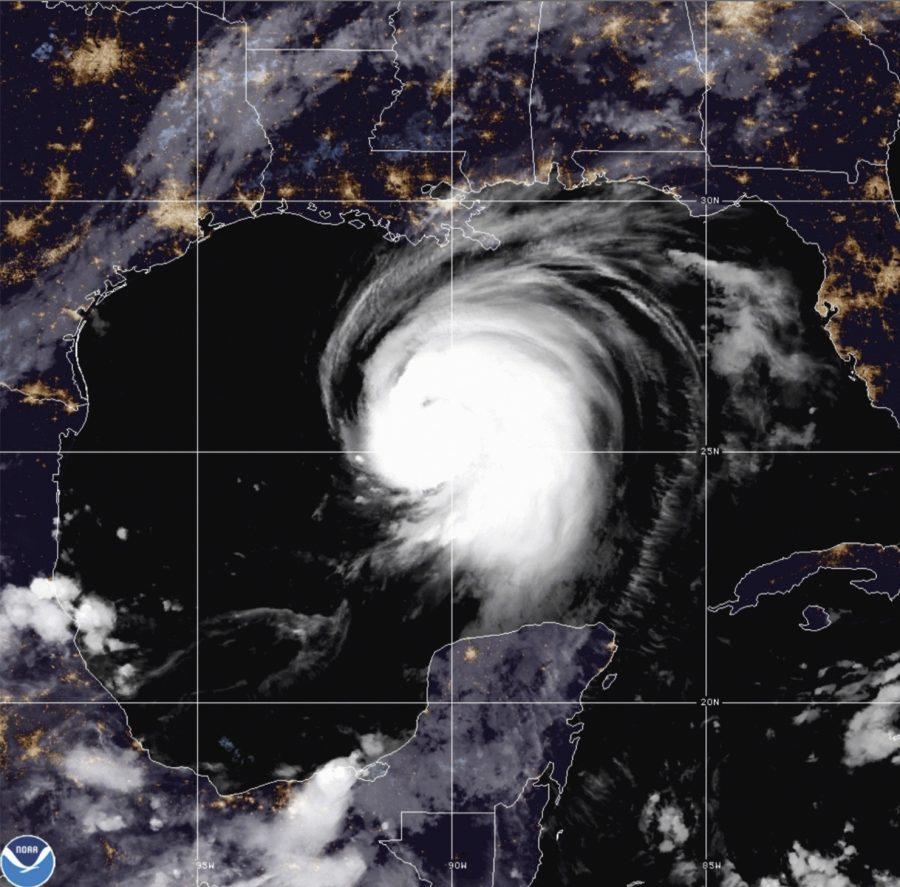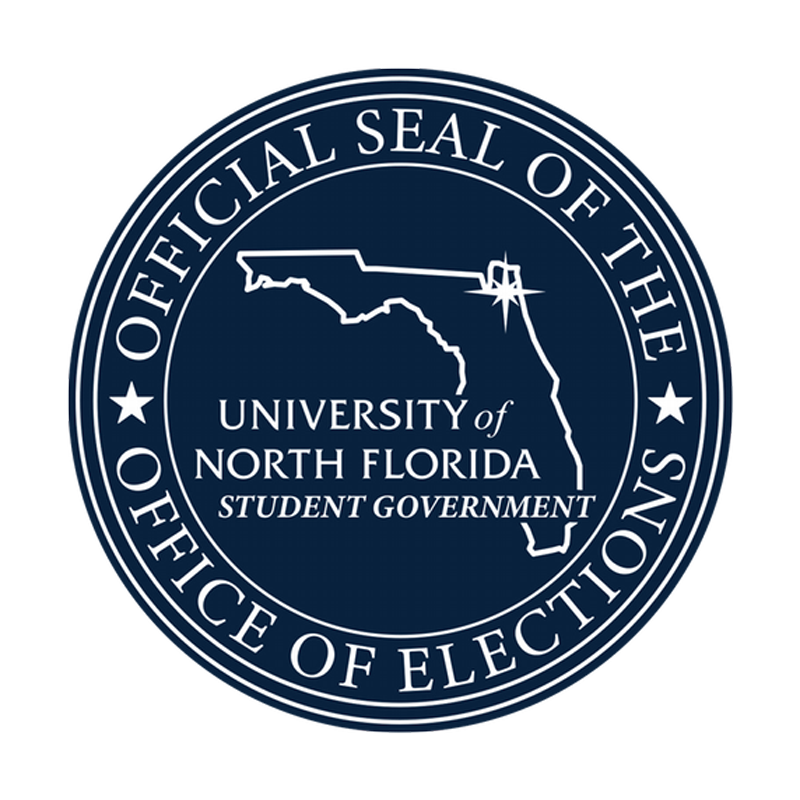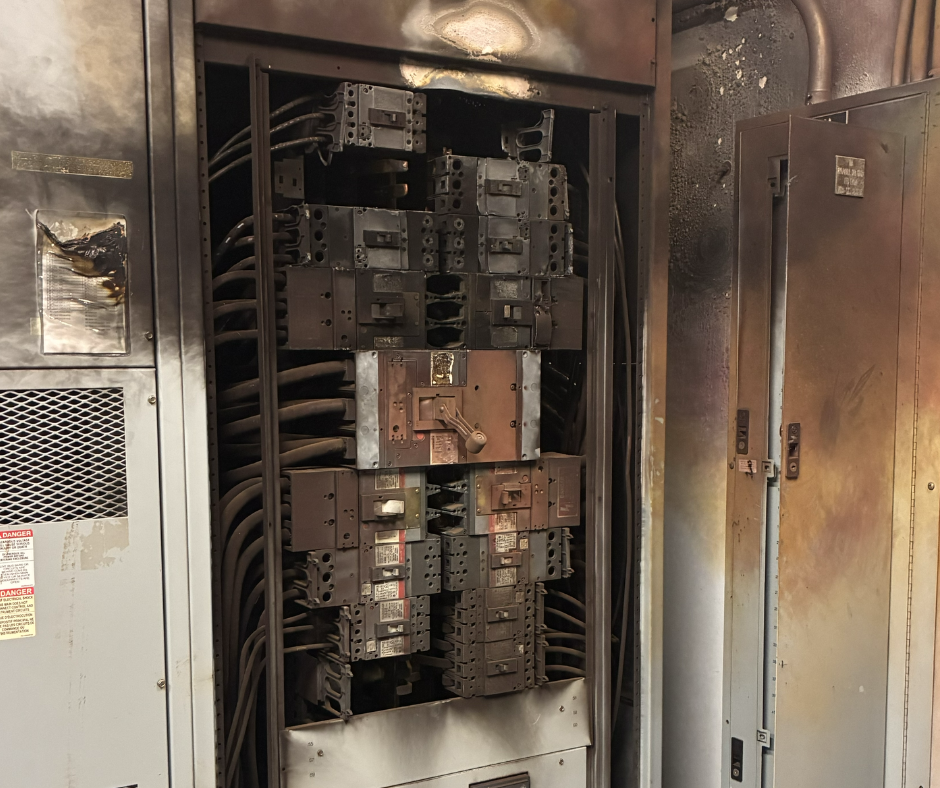GALVESTON, Texas (AP) — Hurricane Laura rapidly gained strength Wednesday, raising fears that it could come ashore as a catastrophic Category 4 storm with an “unsurvivable” 20-foot storm surge that could sink entire communities in Texas and Louisiana. Authorities implored coastal residents to flee before it’s too late.
Laura grew nearly 70% in power in just 24 hours to reach Category 3 status, and it showed no sign of weakening before making landfall late Wednesday or early Thursday. The system was on track to arrive as the most powerful hurricane to strike the U.S. so far this year.
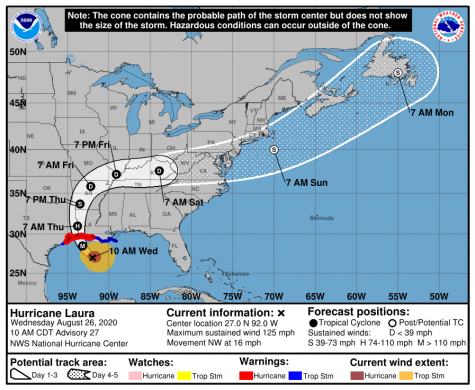
“This is shaping up to be just a tremendous storm,” Louisiana Gov. John Bel Edwards said on The Weather Channel.
The National Hurricane Center kept raising its estimate of Laura’s storm surge, from 10 feet just a couple of days ago to twice that size.
“Some areas, when they wake up Thursday morning, they’re not going to believe what happened,” said Stacy Stewart, a senior hurricane specialist. Whatever does not get blown down by the wind could easily be toppled by seawater pushing inland.
On Wednesday morning, Laura had maximum sustained winds of 125 mph (205 kph). It was about 225 miles (365 kilometers) out from Lake Charles, Louisiana, moving northwest at 16 mph (26 kph). Those winds are expected to increase to 145 mph (233 kmh) before landfall, pushing water onto more than 450 miles (724 kilometers) of coast from Texas to Mississippi.
“Heed the advice of your local authorities. If they tell you to go, go! Your life depends on it today,” said Joel Cline, tropical program coordinator at the National Weather Service. “It’s a serious day and you need to listen to them.”
Hurricane warnings were issued from San Luis Pass, Texas, to Intracoastal City, Louisiana, and reached inland for 200 miles (322 kilometers). Storm surge warnings were in effect from Freeport, Texas, to the mouth of the Mississippi River.
A Category 4 hurricane can cause damage so catastrophic that power outages may last for months in places, and wide areas could be uninhabitable for weeks or months, posing a new disaster relief challenge for a government already straining to deal with the coronavirus pandemic.
In the largest U.S. evacuation during this pandemic era, more than half a million people were ordered Tuesday to flee from their homes near the Texas-Louisiana state line, including the Texas cities of Beaumont, Galveston and Port Arthur, and the low-lying Calcasieu and Cameron parishes in southwestern Louisiana, where forecasters said storm surge topped by waves could submerge whole communities.

A National Weather Service meteorologist in Lake Charles, Louisiana — in the bullseye of Laura’s projected path — took to Facebook Live to deliver an urgent warning for people living south of Interstate 10 in southwest Louisiana and southeast Texas.
“Your life will be in immediate and grave danger beginning this evening if you do not evacuate,” Donald Jones said.
Laura also is expected to quickly dump massive rainfall as it moves inland, causing widespread flash flooding in states far from the coast. Flash flood watches were issued for much of Arkansas, and forecasters said heavy rainfall could move to parts of Missouri, Tennessee and Kentucky late Friday, Laura is so powerful that it’s expected to become a tropical storm again, menacing the northeastern United States, once it reaches the Atlantic Ocean.
Urging people in southwest Louisiana to evacuate before it’s too late, Edwards said they need to reach wherever they intend to ride out the storm by noon Wednesday, before high winds make highway travel unsafe. In Galveston and Port Arthur, many people boarded buses to Austin and other inland cities.
“If you decide to stay, you’re staying on your own,” Port Arthur Mayor Thurman Bartie said.
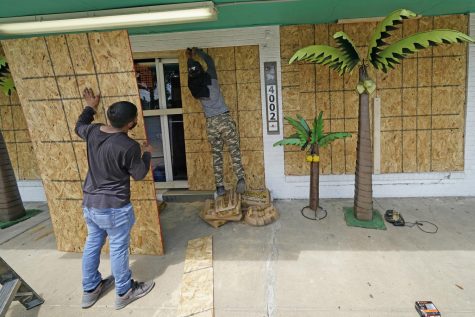
Officials urged people to stay with relatives or in hotel rooms to avoid spreading the virus that causes COVID-19. Buses were stocked with protective equipment and disinfectant, and they would carry fewer passengers to keep people apart, Texas officials said.
Even before dawn Wednesday, officials in Austin said the city had run out of free hotel rooms to offer evacuees and had begun directing families fleeing the storm to a shelter nearly 200 miles farther north.
“Everyone’s recent memory is Harvey. We want them to evacuate,” said Bryce Bencivengo, a spokesman for the Austin’s homeland security and emergency management office.
Becky Clements, 56, evacuated from Lake Charles after hearing that it could suffer a direct hit, almost exactly 15 years after Hurricane Rita destroyed the city. She and her family found an AirBnb hundreds of miles inland.
“The devastation afterward in our town and that whole corner of the state was just awful,” Clements said. “Whole communities were washed away, never to exist again. … So knowing how devastating the storms are, there was no way we were going to stay for this.”
Clements, a church educator, said she fears for her office, which is in a trailer following recent construction.
“I very much anticipate that my office will be gone when I get back. It will be scattered throughout that field.”
The hurricane also threatens a center of the U.S. energy industry. The government said 84% of Gulf oil production and an estimated 61% of natural gas production were shut down, including Valero and Total refineries in Port Arthur, and Citgo’s plant in Lake Charles. Nearly 300 platforms have been evacuated. Consumers are unlikely to see big price hikes however, because the pandemic has decimated demand for fuel.
“If Laura moves further west toward Houston, there will be a much bigger gasoline supply problem,” Oil analyst Andrew Lipow said, since refineries usually take two to three weeks to resume full operations.
Laura closed in on the U.S. after killing nearly two dozen people on the island of Hispaniola, including 20 in Haiti and three in the Dominican Republic, where it knocked out power and caused intense flooding. It’s just days before the Aug. 29 anniversary of Hurricane Katrina, which breached the levees in New Orleans, flattened much of the Mississippi coast and killed as many as 1,800 people in 2005. Hurricane Rita followed Katrina weeks later, striking southwest Louisiana as a Category 3 storm.
___
Martin reported from Marietta, Georgia, and Plaisance from Stephensville, Louisiana. Associated Press contributors include Paul Weber in Austin, Texas; Seth Borenstein in Kensington, Maryland; Melinda Deslatte in Baton Rouge; Louisiana; Jay Reeves in Birmingham, Alabama; Jill Bleed in Little Rock, Arkansas; Julie Walker in New York, and Sophia Tulp in Atlanta, Georgia.




